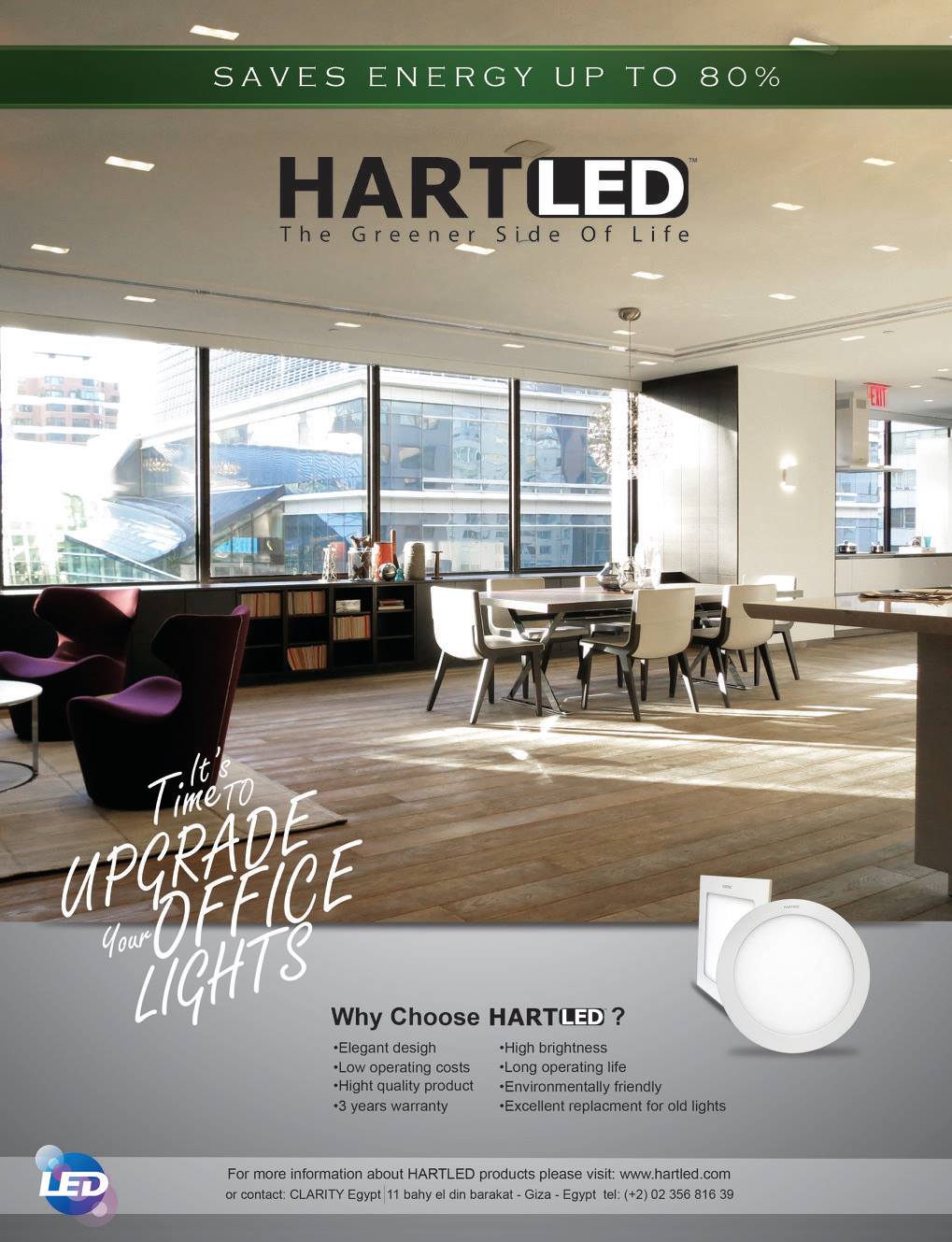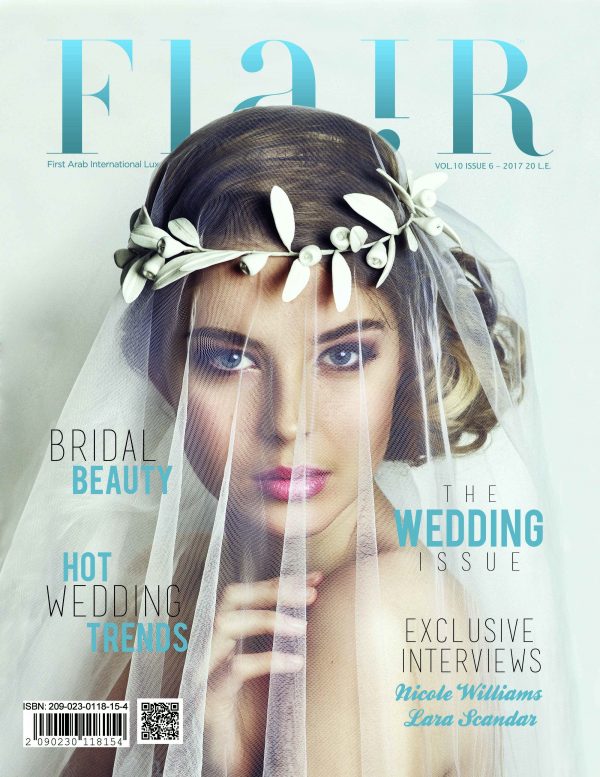While most of us tend to select our jewellery collections based on quick first impressions and snapshots that meet the eye, for a designer like Farah Abdelhamid, jewellery pieces ought to mean much more than that. We talked to her about her up-and-coming brand F for Farah and her rich experience in the field so far.
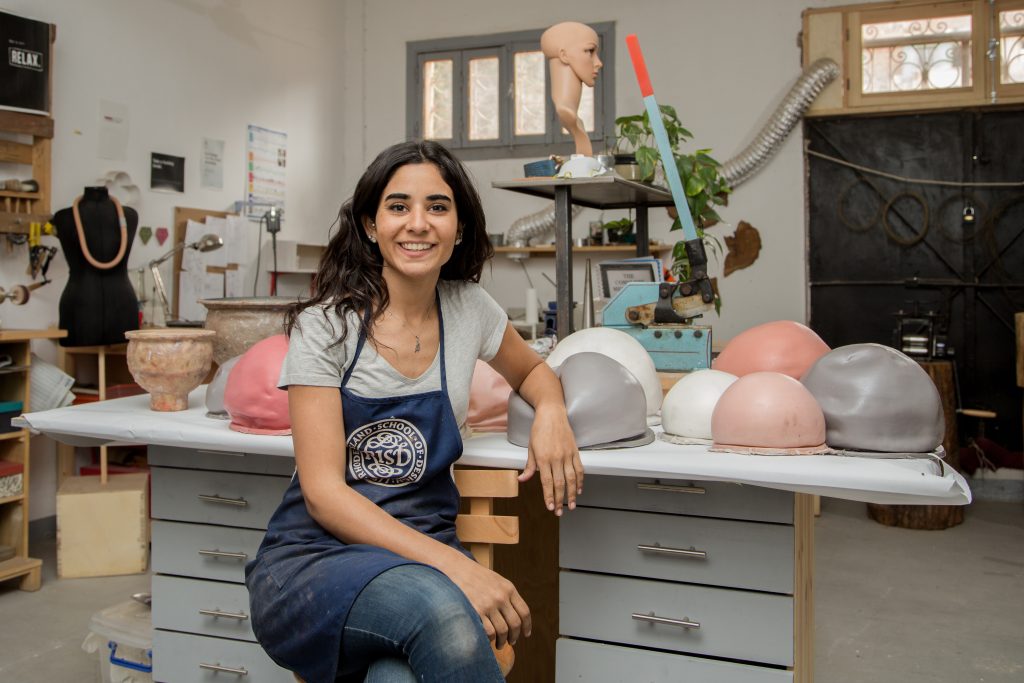
You studied at Rhode Island School of Design. How has it affected where you are now as a jewellery designer?
Being a RISD grad makes all the difference in the world to me and my work. The program was extremely diverse since it combined fundamentals in both the art and design fields, ranging from furniture and ceramics to traditional stone setting techniques and professional development. With this, I have learned to work with a contemporary approach to reach a variety of audiences.
How was your experience as assistant director and project manager at The Design Studio by Azza Fahmy?
The Azza Fahmy teaching experience played a big role in strengthening my design skills as a multitasker and individualistic thinker and mentor. I was purely committed to developing the curriculum and classes while empowering the students through practical techniques, but I definitely learned from them, as well – about jewelry, about different personalities and appreciating the differences. Each designer thinks at their own pace, with a set of goals and limitations, and so as a teacher, it became imperative to me to adapt to their needs and problem-solve according to their individuality instead of imposing my own. I also learned a lot of social and managerial skills that I use on a daily basis with my students now.
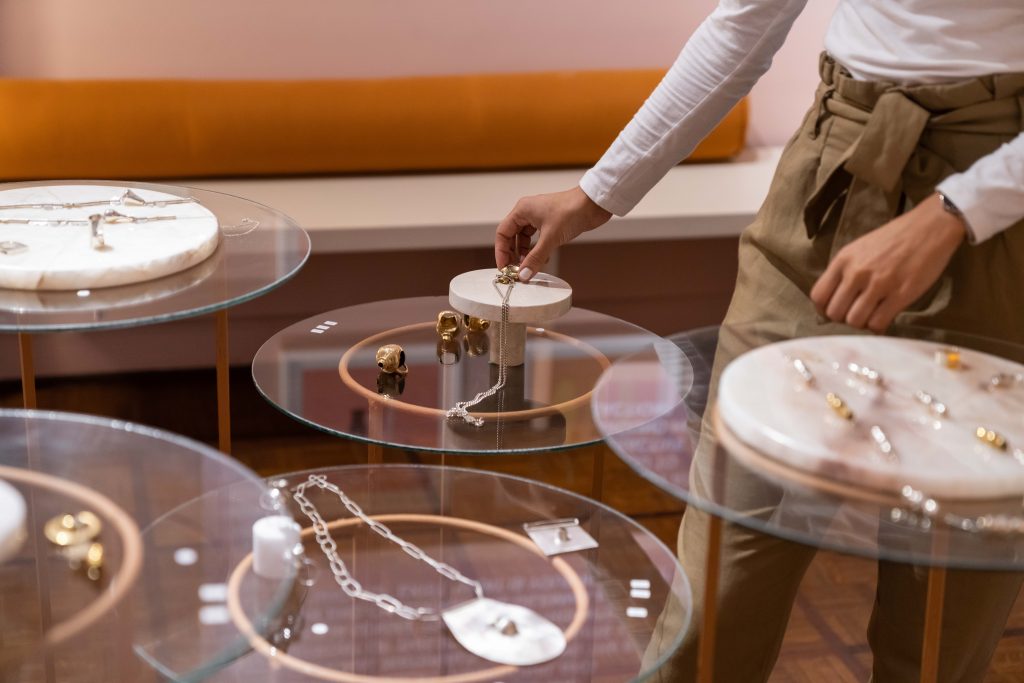
Tell us about your concept regarding the relationship between the body and the wearable object.
Through my studies in psychology and social research, I became interested in the moments a person goes through before they decide to wear jewelry and how we can question that through design, form and material. I wanted to create conceptual pieces out of non-precious materials such as fabric and silicone to prompt this conversation. Does it have to be functional, wearable or is it just decorative? I started removing all “traditional” design elements that just “tell” the body to wear the piece, and this research developed into my incorporation of “surprises” and unexpected designs in the more commercial jewelry pieces made of silver and gold. By giving the “wearer” more time to play and be curious about the piece, it doesn’t become a subconscious experience anymore but one that is more personal and more engaging than traditional jewelry. I use this directly and indirectly in all my work by focusing on making jewelry for the body rather than depicting a certain persona or style of fashion.
Do you have any advice for young jewellery designers who are struggling to find and express their own voice in this field?
To all young jewelry designers, and not only the ones that I teach in my studio, I would recommend research and willingness to learn. The Egyptian market is saturated with go-to-designers that are in and out of the field with successful pieces and first collections but weak design innovation to keep them going strong. I say, do a lot of research, get to know your chosen subject and develop a design work ethic by getting to know the craft, watching skilled craftsmen work, learning from ancient techniques and readapting your work to truly present something unique and unseen in the market. From the business side of things, I suggest building relations with other artists and designers you can learn from and collaborate with. Seek out a mentor in the design field before approaching PR and marketing agencies that might alter your brand vision too early. With that approach, you will be able to tackle any design, any theme and any market. Fingers crossed, I’m still on that path myself.
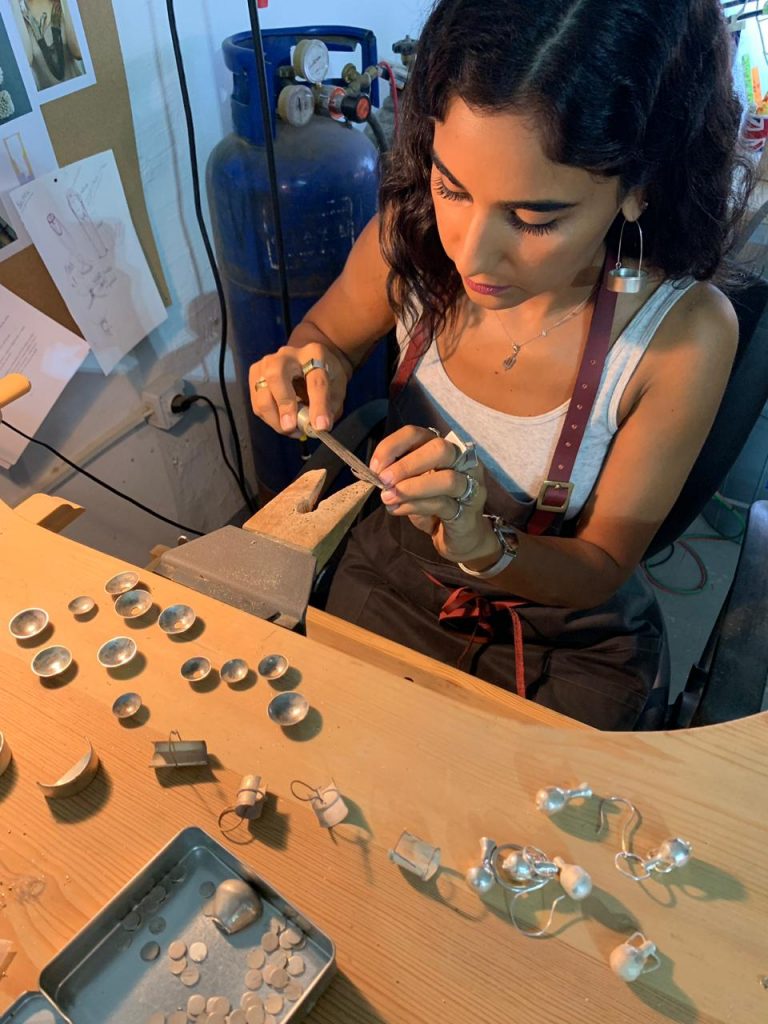
How did it feel when you first started getting exposure at international fairs and exhibitions? Which was your favorite event to be a part of?
My first international exhibition was in Amsterdam right after graduation. It was a confusing and surreal experience jumping out of the “student zone” and into a new world as a designer/maker. The feedback from the audience was incredible and it drove me to continue pursuing this full-time. At each local and international event, I got to witness and learn about differences in taste, values and reactions and so I cannot say I have a favorite (yet) but I am looking forward to new opportunities.
What is your vision for F for Farah?
My vision for F for Farah is to remain a small-and-steady fluid enterprise, with pieces all handmade by me as an independent jewelry maker and artist. My passion is to produce my work, teach in the studio, design for brands as well as undertake collaborative projects that channel my creativity and expand my outreach. I launched my online store only a year ago, paired with selling at small local popups and exhibitions. However, this vision is now transitioning into being more present in the regional market through concept stores and competitions in order to strengthen my unique role in the field.
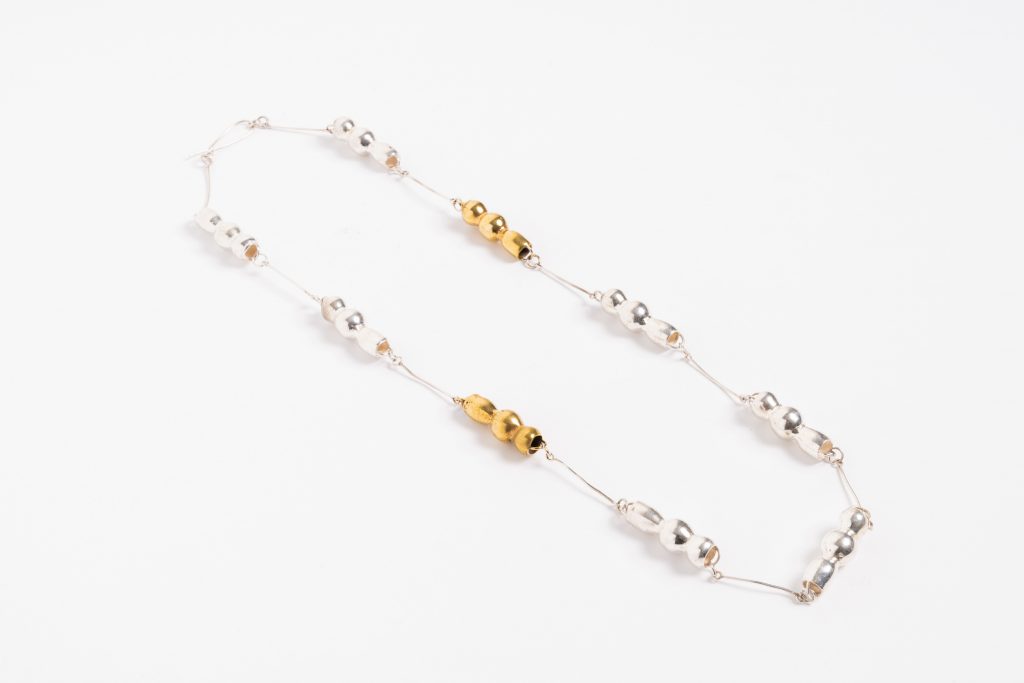
How do you relate to various jewellery trends in the market right now?
While I do follow trends and the work of large design powerhouses, my favorite thing about them is that they are constantly shifting. My role is to learn from them as agents for change in the grey area between fashion, jewelry and accessories. They are the playmakers that aid my role as a contemporary artist to push boundaries and engage an audience. I am always curious to see how they incorporate new techniques and use new combinations of materials such as the new age move to sustainable and recycled materials. As a maker that is involved in the backstage side of jewelry design, these trends are definitely something I cannot ignore.
Tell us about your usual creative process when designing your pieces.
My creative process starts with a lot of research, reading and writing in different subjects around the arts: performance, history, architecture and so on. I’m even inspired by all things non-jewelry that are related with the body and the wearer. Once I have my subject, I outline the vision for the collection, work tirelessly to develop design elements and play with new materials to introduce in the work. After that, I start making models and samples with a 3D rendering software, while using paper and clay models to visualize and develop each piece before moving into production.

